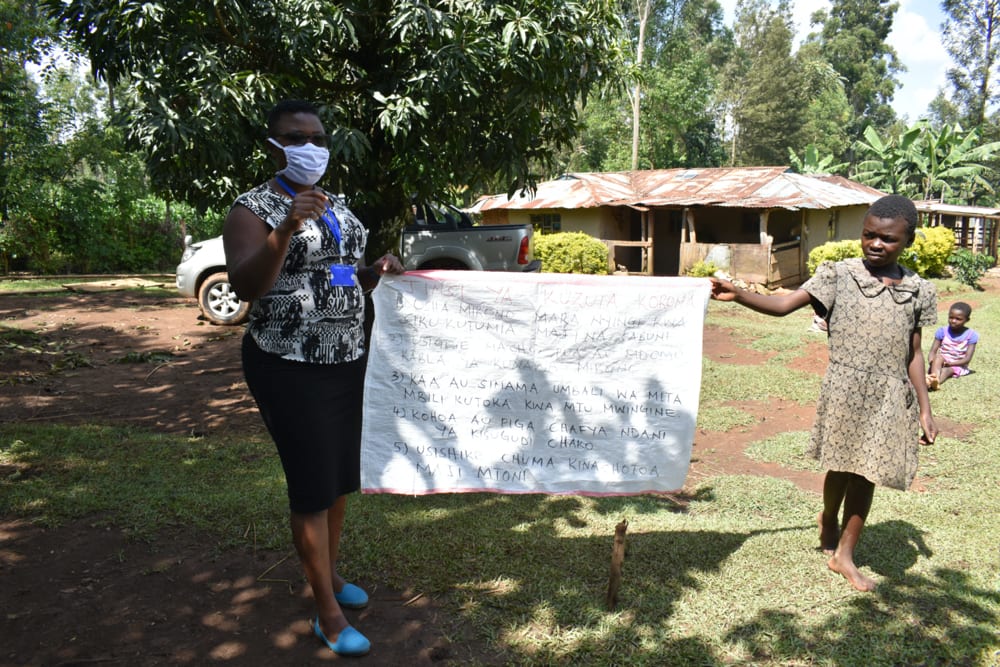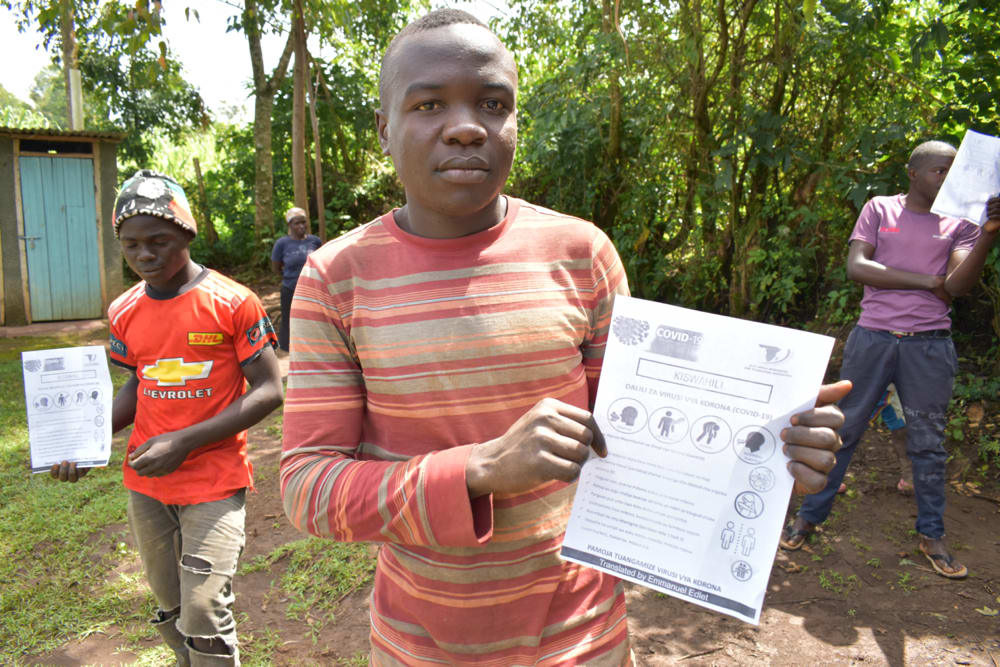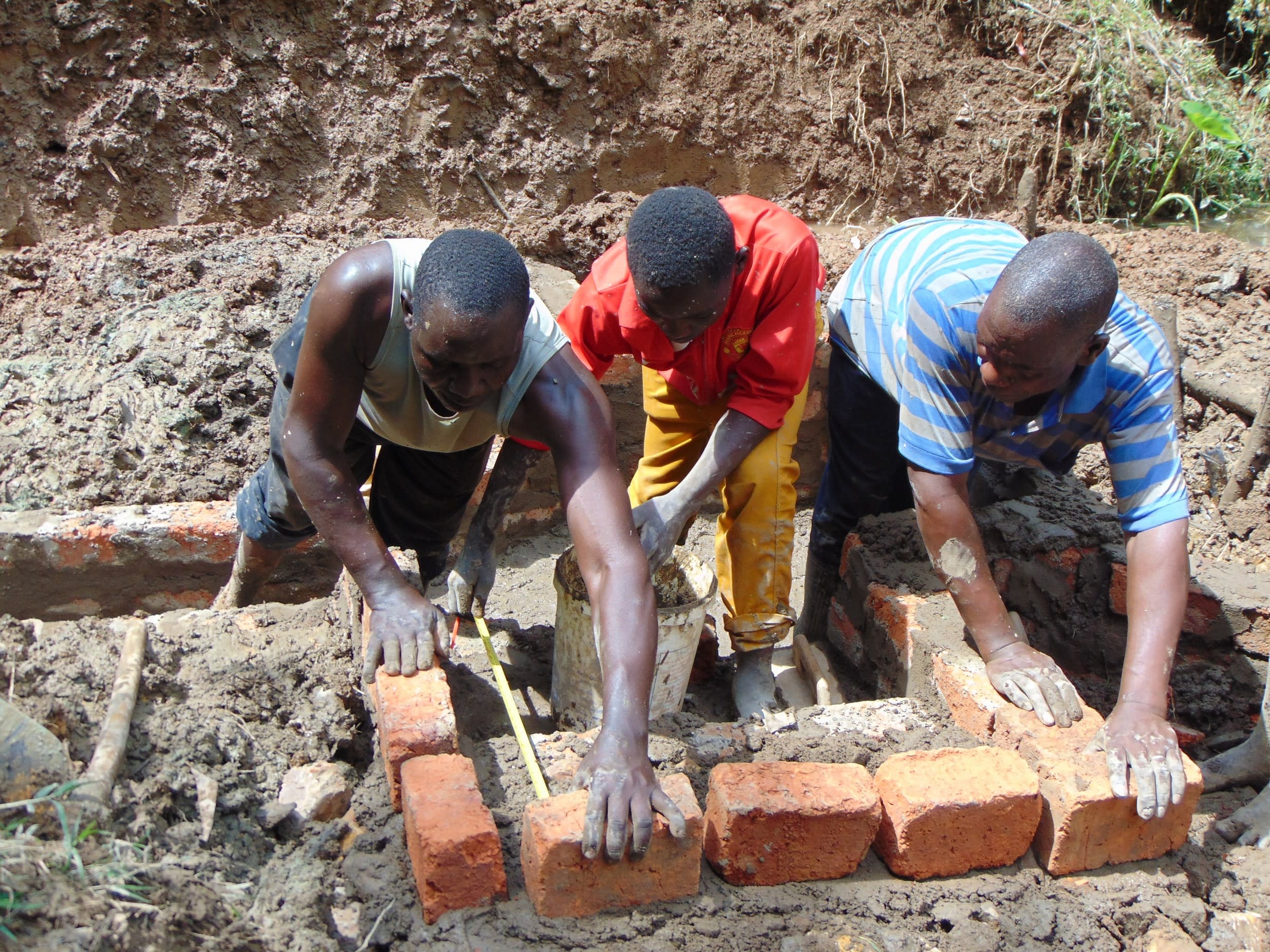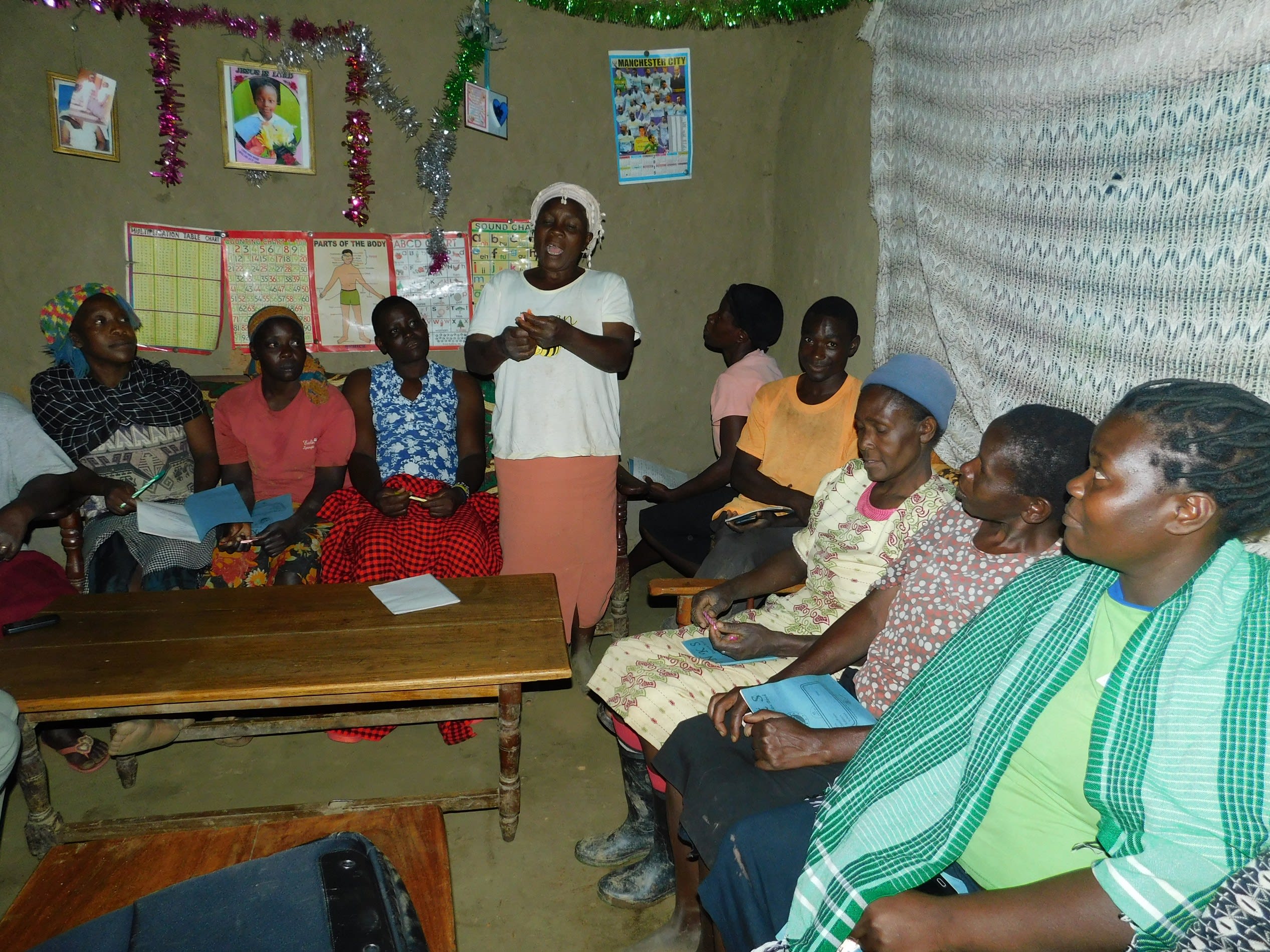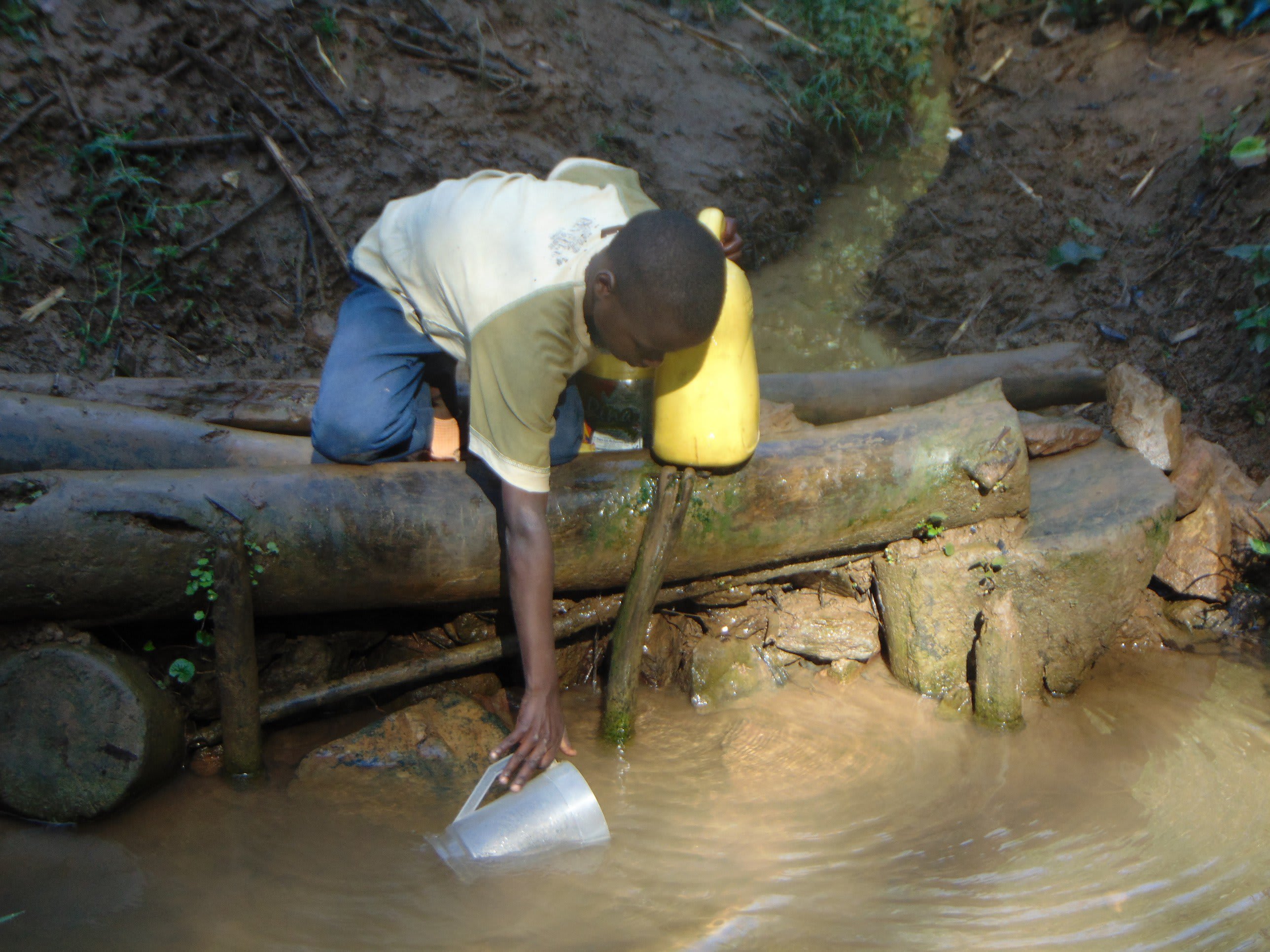An average day for most of the 210 people living in Shamiloli begins at 6 am when mothers prepare their kids for school and then start engaging in other daily activities like cleaning and fetching water. Fathers wake up and head to their farms or other income-generating activities until 5 pm when everyone retires for the evening.
The most common crops are sugarcane and banana. Other families specialize in the rearing of dairy animals and pigs.
But these important income-generating opportunities are often disrupted by illnesses. One big factor of these illnesses is the dirty water that's being consumed on a daily basis. Water is fetched from Kwasasala Spring, an open contaminated source in the community. The water itself is visibly dirty as algae and leaves float on the surface.
Since the banks can get extraordinarily muddy and slippery, community members suspended a log platform over one edge to stand on while fetching water. Containers are dunked directly under the surface until full.
According to the community members, unsafe drinking water from this spring has resulted in outbreaks of typhoid, diarrhea, and bilharzia that have claimed the lives of many community members. A lot of resources have been used to treat family members - which economically affects each family and the community as a whole.
"The problem of unsafe drinking water in this community has increased our poverty index. The little money we get mostly goes to the hospital to treat our loved ones. Developments for us have also stagnated because we use most of the family resource for medication," said Mr. Mambili.
"If this spring is protected all this menace will be curbed and our community will heal."
When doing the baseline survey the community members were not willing to cooperate with us because they claimed that about two years ago a different organization came to the community and wanted to protect the spring, and asked the community to contribute a certain amount of money as part of their contribution towards the project. The community members then contributed money and gave it to the field officer who never came back. The community vowed not to trust anyone again.
We talked to them in detail, explaining our ethics and our intentions for the community until they gained our trust and allowed us to do the baseline survey - and they promised to cooperate towards the project's success.
What we can do:
Spring Protection
Protecting the spring will ensure that the water is safe, adequate and secure. Construction will keep surface runoff and other contaminants out of the water. With the community’s high involvement in the process, there should be a good sense of responsibility and ownership for the new clean water source.
Fetching water is predominantly a female role, done by both women and young girls. Protecting the spring and offering training and support will, therefore, help empower the female members of the community by giving them more time and efforts to engage and invest in income-generating activities.
Training
"In this community, many of my fellow community members have not taken hygiene and sanitation seriously," said Mrs. Ayemba.
"Some is due to ignorance while others do not have the information of good hygiene practices. This has resulted in many illnesses. We are also requesting the organization to keep on visiting us and teach us on matters hygiene and sanitation."
Community members will attend hygiene and sanitation training for at least two days. This training will ensure participants have the knowledge they need about healthy practices and their importance. The facilitator plans to use PHAST (Participatory Hygiene and Sanitation Transformation), CLTS (Community-Led Total Sanitation), ABCD (Asset-Based Community Development), group discussions, handouts, and demonstrations at the spring. One of the most important topics we plan to cover is the handling, storage, and treatment of water. Having a clean water source will be extremely helpful, but it is useless if water gets contaminated by the time it’s consumed.
Training will also result in the formation of a committee that will oversee operations and maintenance at the spring. They will enforce proper behavior around the spring and delegate tasks that will help preserve the site, such as building a fence and digging proper drainage. The fence will keep out destructive animals, and the drainage will keep the area’s mosquito population at a minimum.
Sanitation Platforms
In most of the toilets we visited in the community, the area inside was a mess. When they were asked how often they clean the toilets, they reported that they usually sweep them at least once a week. Water is not used to clean the latrines because the floors are either made of mud or wood. If the wood gets wet, there's a chance it will rot out from under the latrine user.
On the final day of training, participants will select five families that should most benefit from new latrine floors.
Training will also inform the community and selected families on what they need to contribute to make this project a success. They must mobilize locally available materials, such as bricks, clean sand, hardcore, and ballast. The five families chosen for sanitation platforms must prepare by sinking a pit for the sanitation platforms to be placed over. All community members must work together to make sure that accommodations and food are always provided for the work teams.

 Protected Spring
Protected Spring
 Rehabilitation Project
Rehabilitation Project












